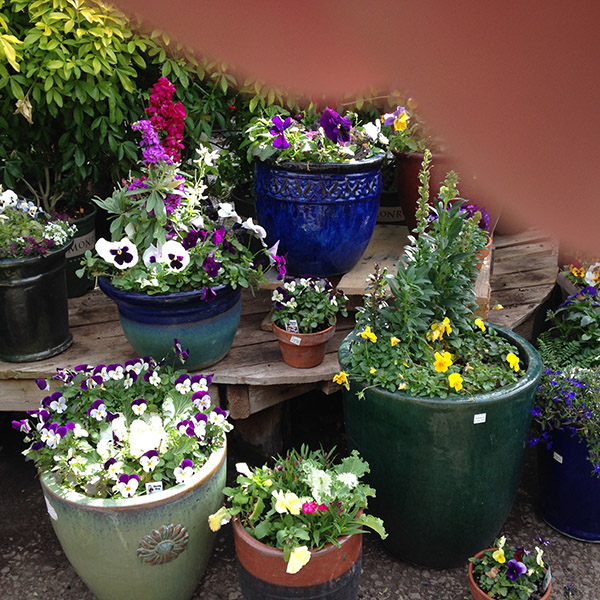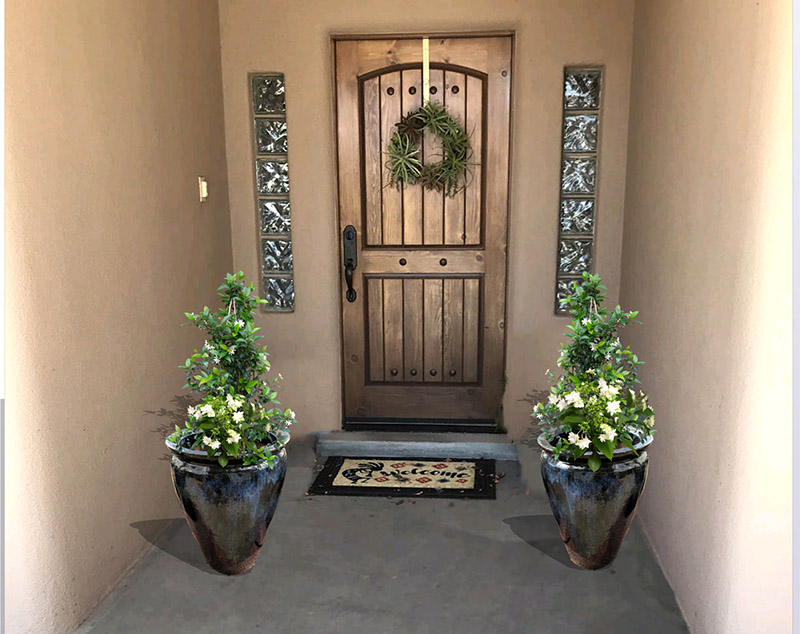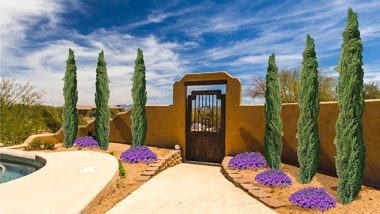Last updated on December 19th, 2024 at 07:02 am
Successful Container Gardening. How to maintain and create beautiful, wonderful hanging baskets or container plants at any time of the year.

The first thing you’ll need is good loamy potting soil. One of the best is the Fertilome potting mix as it contains a wetting agent, perlite, and sphagnum peat moss. It can be used for hanging baskets, container plants, or garden beds.
We get a lot of customers coming into our stores and asking, “Can you tell me why my plant is dying?” The first thing I check is to see if their container is plugged at the bottom hole.
I tell them your soil is super wet and the roots are saturated with water. Root rot I tell them, all they needed to do was clear the debris or hard soil that is blocking the holes in their pot. Problem solved a happy customer.
Always use a pot that has a hole or several holes at the bottom for drainage. Periodically check the hole to make sure it is not plugged.

Use good loamy soil
Good soils such as FertiLome or any potting mix that uses perlite, peat moss, and other ingredients work best because this type of soil will typically retain moisture and is easier for the root system to grow and thrive.
All soils will compress during the winter season due to inactive gardening. When it does, the plant roots stop growing because they require good open spaces to move into and absorb nutrients. Hard, compacted soils are not conducive to growing good container plants.
You can reuse potting soil or mix it from year to year. Just basically break it down with water and reuse it again. Chew it up with a shovel or trowel to cut up all last year’s roots and add approximately 10 % volume of organic compost. The compost increases air space and gives plants a boost in healthy nutrition.
How often should you feed container plants?
It’s important to note that if you water your container plants over, and over again the soil will leach out the nutrients it needs to thrive.
If you want great-looking container plants year-round you should feed them bi-weekly, or at the very least once per month during the spring, summer, and fall seasons.
Most Nitrogen-based fertilizers are used for plant growth, and water-soluble are the best type. Grow-More and Miracle Grow water-soluble fertilizers work best. A good 20-20-20 analysis works best.
What about slow-release fertilizers?
A low-release granular fertilizer will do the job as it will slowly release nutrients into the soil throughout the growing seasons. I recommend this type of fertilizer for folks who aren’t always around to feed their plants.
As you water your containers from the top the dissolved nitrogen is leaving the container from the bottom. You can also use a fish-emulsion liquid fertilizer with seaweed to provide all the trace nutrients plants require and I recommend it highly. Yes, it takes a little more time and effort but again highly recommended.
You can use any liquid plant food (like Shultz) to promote growth. Compost tea is at the top of the list of liquid plant food and if you make your own compost tea, your plants will respond with bigger and better blooms as well as increased vigor. Read more about compost tea here.
Organic Fertilizers work well too. Here is a post about fertilizers including organic fertilizers. What is Fertilizer?
Watering Container Plants

It’s amazing how many folks ask “how much should I water my container plants”? Well… of course, it depends on the type of plants you are using and the season.
Tips for watering container plants
Succulents – About once or twice per month and make sure to soak them thoroughly before watering again. This includes cactus, agave, aloe vera, and most drought-tolerant type plants.
Everything else indoors – Water about 2-3 times per week. More often during the mid-summer heat. Indoor succulents and cacti about 1-2 times per month. Take your indoor plants outdoors every couple of months or so that they can benefit from the best natural light possible… the sunshine.
Outdoor Plants in Containers – All containers retain heat, especially during the summertime. It’s best to water almost daily for good vigorous growth during mid-summer.
Hanging Baskets – Water daily during the summer. About every other day during the spring and fall seasons.
It is important to soak them all the way to the bottom at each watering. Continue watering until water emerges from the pot towards the bottom. This ensures the water can reach all parts of the roots in the container and will help them grow properly.
How much is too much water?
Successful Container Gardening requires a little more attention as opposed to outdoor gardening or in-the-ground gardening. It’s important to note that pots will retain heat plus the added sun during summer can dry out your soil rather quickly.
Most container plants thrive on lots of water but too much can have an adverse effect. The biggest problem is root rot which means your root system will stop sending water toward the top of your plants thus your plants will look like they are drying out!
It is worth saying this again “check your container to make sure the holes at the bottom are not plugged”. It’s amazing what a big difference this will make.
Hanging baskets

Managing hanging baskets are almost the same as container plants, after all, they are still in a container, right? The important thing to know is that hanging baskets are hanging… which means gravity will pull the water and nutrients down towards the earth! This means you should water and fertilize often during the summer months.
Water them using a hanging plant watering wand or take them down, place them on the ground, and use a watering can. Let them drain before placing them back.
What about insects and diseases?

Tips To Keeping Your Container Plants Healthy
Like all plants that are in the ground, you will have to visually check your container plants often. They are susceptible to mealybugs, fungus gnats, aphids, and fungus.
We recommend using a systemic insecticide that is applied to your potting soil. This will kill insect gnats and insect larvae that are in the soil. It will not kill the insects that are flying around your plant.
For indoor flying insects use neem oil or a soap insecticide spray as these are organic and less harmful. For heavily infested insects it is recommended to throw out the plant and clean your pot with soapy water before using it again.
For fungus, the easiest solution is to spray with a ready-to-use neem oil spray. But if you want to be 100% organic you could also use a baking soda solution.
First, you pour about one quart of water into a spray bottle and add one teaspoon of baking soda. Add half a teaspoon of canola oil and about 2-3 drops of dish soap. Don’t forget to shake your solution thoroughly before spraying your plants. It will take several applications before you see good results.
Got questions? Let us know by commenting below.
Successful Container Gardening

Greenhouse Manager, Master Gardener, and Webmaster.
If you have any questions or enjoyed this post, feel free to share your thoughts in the comments below.



